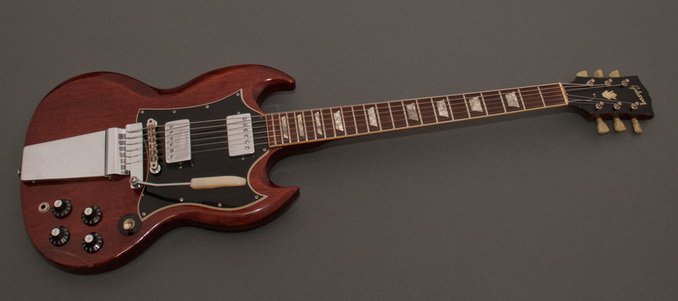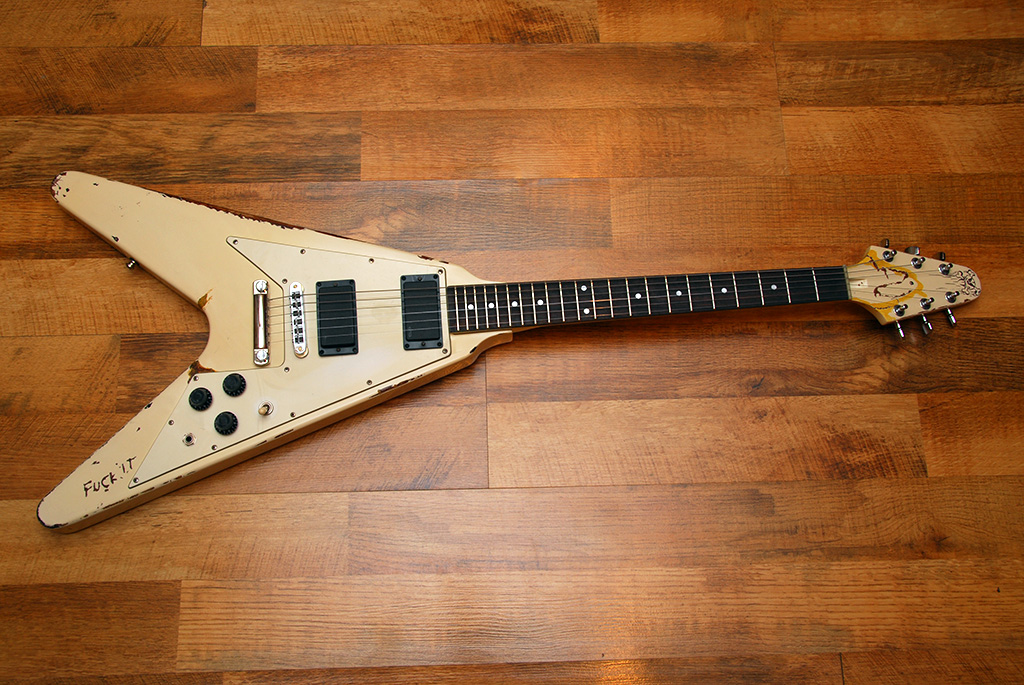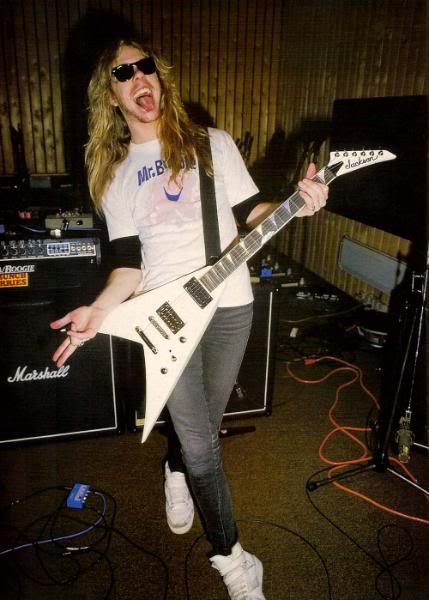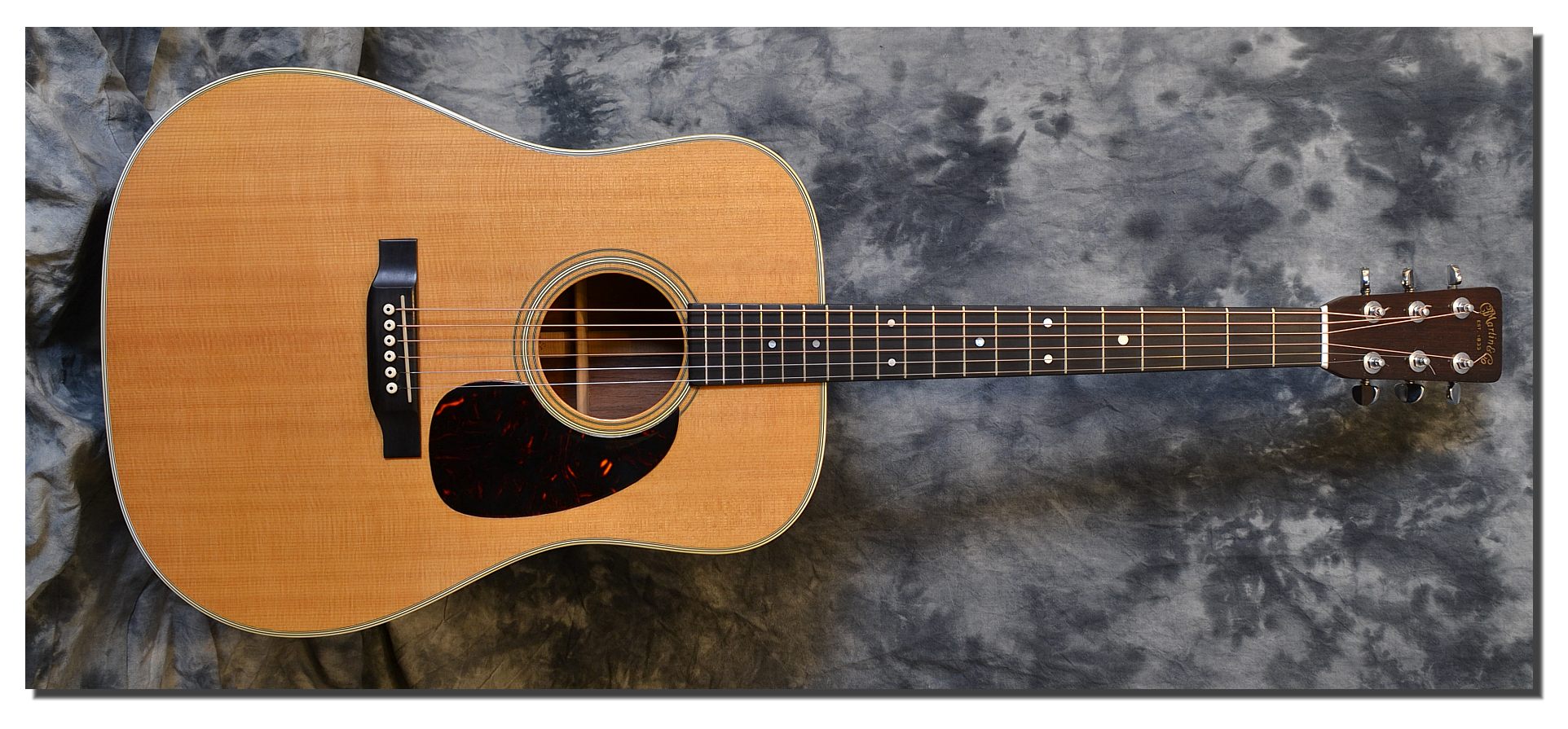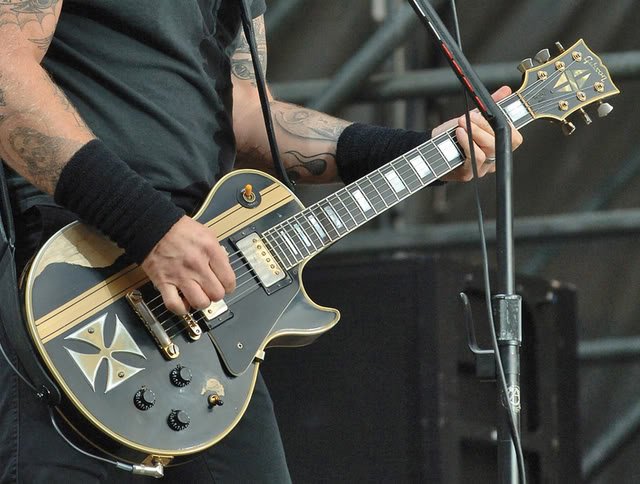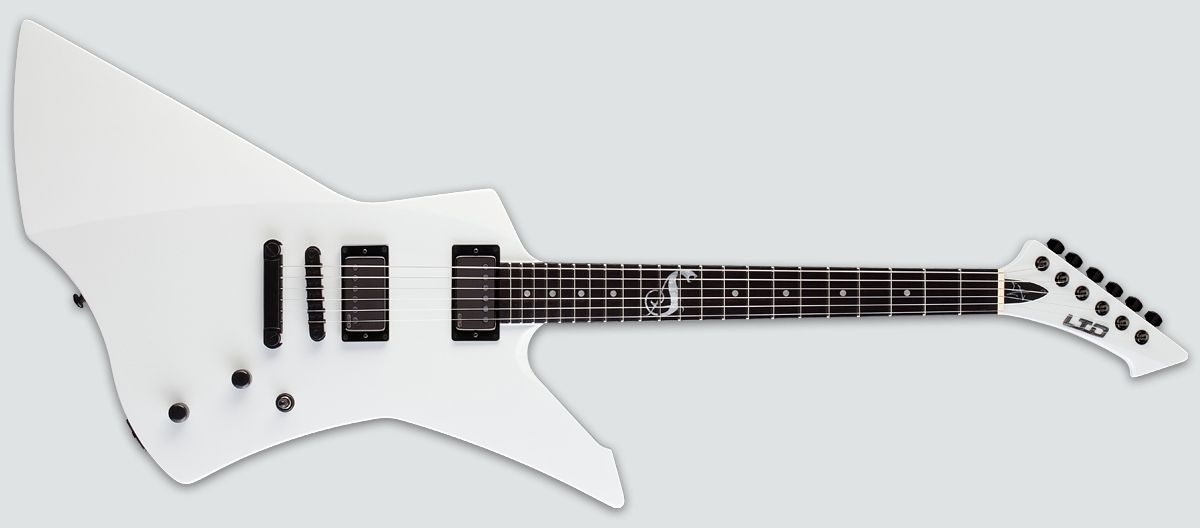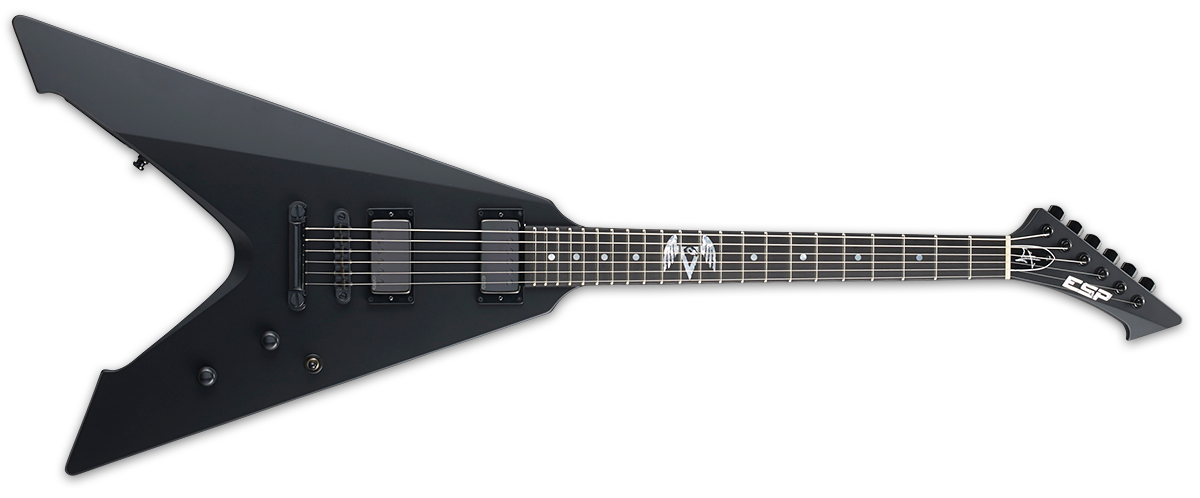- Джеймс Хэтфилд и его гитары
- Гитары Джеймса Хэтфилда
- 1969 Gibson SG Standard
- Electra Flying V
- 1985 Jackson King V Custom “Kill Bon Jovi”
- 1966 Martin D-28
- 1987 ESP MX220 “Eet Fuk”
- 1973 Gibson Les Paul Custom
- ESP/LTD Snakebyte
- ESP Vulture
- Metal History: The Cheap Guitar That Launched James Hetfield’s Career
- Гитары Джеймса Хэтфилда (Metallica). Первая часть.
- 1969 Gibson SG Standard
- Electra Flying V
- Гитары Джеймса Хэтфилда (Metallica). Третья часть.
- 1996 ESP MX250 “Elk Skull”
- 1996 Ken Lawrence Explorer
- ESP Flying V JH-1
Джеймс Хэтфилд и его гитары
Джеймс Алан Хэтфилд родился 3 августа 1963 года в Калифорнии. Он является ритм-гитаристом и вокалистом трэш-метал группы Metallica. Хэтфилд был одним из основателей Metallica в октябре 1981 года. В то время барабанщик Ларс Ульрих разместил в газете в Лос-Анджелесе объявление о поиске музыкантов для группы. В музыкальном плане на творчество коллектива оказали влияние такие известные метал-группы, как Iron Maiden, Judas Priest, Motorhead и др. С тех пор Metallica получила восемь премий Grammy и выпустила десять студийных альбомов, три концертных альбома, четыре EP, 24 музыкальных клипов и 45 синглов. В 2009 году Хетфилд занял 8-е место в книге Джоэла Макивера «100 величайших металлических гитаристов».
Что касается его гитар и оборудования, то Джеймс начал с относительно дешевой копии Gibson Flying V, которую он использовал на дебютном альбоме Metallica «Kill ’em All», но вскоре заменил её на пару белых 1984 Gibson Explorers, которые хорошо служили ему при записи следующих двух альбомов. С конца 80-х годов он очень часто использовал гитары ESP, оснащенные двумя звукоснимателями EMG 81/60, что в конечном итоге привело к тому, что собственные датчики Джеймса назвали «Het», выпущенные в 2009 году. Звучание гитары Хэтфилда на раннем этапе творчества был результатом использования Mesa Boogie Mark IIC + в качестве предусилителя, управляемого 100 Вт Marshall JCM800 для перегруза, при использовании Roland JC120 для чистого звука.
Гитары Джеймса Хэтфилда
1969 Gibson SG Standard
Джеймс купил эту гитару у своего школьного друга, который играл с ним в школьной джазовой группе. Хэтфилд использовал эту гитару для написания своих первых песен, и для игры в своих первых группах. Что случилось с этим инструментом после создания Metallica, к сожалению, неизвестно, так как к тому времени Джеймс начал использовать уже другие гитары.
Electra Flying V
Эта электрогитара была куплена в 1980 году за 200 долларов. Хэтфилд использовал её на первом альбоме Metallica “Kill ’em All” и продолжал играть до 1984 года, когда она была повреждена во время концерта. В тот момент на гитаре было установлено два хамбакера Seymour Duncan Invader и бридж Tune-o-Matic.
Незадолго до записи альбома «Death Magnetic» в 2008 году, Джеймс решил восстановить эту гитару. Он заменил некоторые комплектующие, включая звукосниматели, которые были заменены комплектом EMG 81/60.
1985 Jackson King V Custom “Kill Bon Jovi”
Эта гитара использовалась Джеймсом для записи альбома Master of Puppets в 1985 году, а также во время последующего за этим тура. В середине 1985 изготовление данного экземпляра King V было завершено. Изначально инструмент комплектовался бриджем Tune-o-Matic, звучками Seymour Duncan Invader и имел белый цвет. В 1987 году Джеймс удалил оригинальные датчики и заменил их на EMG 81/60.
1966 Martin D-28
Одна из акустических гитар Джеймса Хэтфилда. Использовалась для студийной записи песни «Mama Said» и некоторых концертных выступлениях.
1987 ESP MX220 “Eet Fuk”
Первый гитара Хэтфилда фирмы ESP. Он купил её непосредственно перед записью пластинки “… And Justice For All” и использовал, как основной инструмент для записи.
1973 Gibson Les Paul Custom
Одна из главных гитар Джеймса времён альбома St. Anger. Она использовалась как во время сеансов записи в студии, так и в туре, который последовал за выпуском альбома. Данный Les Paul Custom был выпущен в 1973 году. Гитара имеет отличительные особенности в виде изображения мальтийского креста за бриджем и золотой полосы над звукоснимателями.
ESP/LTD Snakebyte
Snakebyte модель гитары, которую Джеймс использует в последнее время. Она выполняет роль главной гитары на концертах. Корпус и гриф гитары сделаны из махагона, а накладка грифа выполнена из черного дерева.
ESP Vulture
Модель электрогитары ESP под названием «Vulture» также часто используется Хэтфилдом на концертах в 2016—2017 годах.
Стоит отметить тот факт, что гитарист Джеймс Хетфилд использует очень мало гитарных эффектов для создания своего звучания на сцене или в студии. Его звук больше зависит от настройки усилителя и использования эквалайзера.
Источник
Metal History: The Cheap Guitar That Launched James Hetfield’s Career
\n Going back to the \»Kill ‘Em All\» days.
\n \n \n \n \n \n \n JustinBeckner \n \n \n \n \n \n
Metallica mastermind, James Hetfield, has used a multitude of guitars through the years, from Gibsons to ESPs to custom builds by Kenneth Lawrence, James Trussart, Zemaitis, and Hutchinson Guitars. He’s even been spotted with the occasional Fender, Jackson, and BC Rich. But for the sake of this article, we’re going to bring it all the way back to where it all began. The guitar he used on Metallica’s debut album, Kill ‘Em All and the first four years or so of Metallica’s career — a guitar that is often mistaken for a Gibson Flying V.
Here, James explains what drew him to the Flying V shape in the first place in an interview with Guitar World in 2018:
\»As most kids who love certain bands, you just wanna get the same guitar that guy is playing. I wanted a white Flying V forever — that was it. I mean, c’mon! The Scorpions, Judas Priest. It was a heavy metal guitar. You know, Michael Schenker — white V. It was my dream to have a white V. When I finally got a V, it was kind of weird to play. When you’re standing with it, sometimes it rolls off you. And you’ve seen pictures of The Kinks with a Flying V, and he’s playing through the middle, holding it this way. It’s, like, ‘Wow! That’s weird.’ But actually, when you’re sitting down with it, you’ve got the V down there, it’s super easy. I loved the V shape once I got used to it. I got my white V in 1980. It was the second guitar I ever owned, and I probably bought it for $200. I knew it was a copy, but we treated it as a real Gibson. I wanted a white one because Michael Schenker of UFO had one, so I needed one too. The neck snapped on it twice on tour. It’s been glued quite a few times. It’s got Seymour Duncan pickups in it, with a little more output for the crunch than the originals had. The only other thing that’s customized is the artwork. That was the first guitar I started scratching stuff into.\»
There seems to be some inconsistency with whether or not James initially knew it wasn’t a Gibson when he bought it as you can tell from this interview with Guitar World from 2012:
…and the white V – it’s not a Gibson, right?
“No, it’s a Japanese knockoff. It’s actually the third guitar I ever owned. My first guitar was a swap-meet thing that I paid five bucks for and painted about 12 different times. I put Eddie Van Halen stripes on and all that stuff, like every kid did. And the second guitar I had was, like, a ’69 SG that some kid sold me in high school for $200. I traded it for a PA because I wanted to be the singer, because everyone was looking for a singer back then. And then the next guitar I bought was this V. Somebody sold it to me as a Gibson V, and as a dumb kid I had no idea. Eventually it dawned on me: Oh, it has a bolt-on neck. It can’t be. Hmmm, why does it say “Made in Japan” on it? [laughs] But I didn’t care. I didn’t have a care in the world. It’s a white V! It’s Michael Schenker, it’s Scorpions. That was metal: black pants, white V, go! I couldn’t care less that it was not a real Gibson.”
Allegedly, the guy who sold James the guitar had put a Gibson truss rod cover on it and told him it was a Gibson. Many photos of the guitar through the years feature the Gibson truss rod cover.
Since it was not a Gibson, many people believe it was an Epiphone, but it was, in fact, a Flying V copy made by a company called Electra. Electra made these Flying V copies from 1974 until they were discontinued sometime in the early-80s [1981, I believe]. They featured a bolt on neck and mahogany body with two humbuckers. The interesting thing about Electra was that, unlike most other brands of imported guitars of that era which were sourced from a single manufacturer, Electra guitars were ordered from many different Japanese factories and distributors. So you had several different factories all making guitars which were sold as Electra Guitars. This resulted in a lot of variation in quality and details. In 1981, all models came to be made by a company called Matsumoku, which also made Japanese Epiphone guitars from 1970-1986. The company was also responsible for making Univox and Aria brands. Electra made a few “original” designs, although I use the term “original” pretty loosely as it’s not hard to trace the lineage of those designs back to a Fender or Gibson, the company was never able to completely shake its stigma of being a “Cheapo Copy” brand. They made copies of Les Paul, ES-335, SG, Stratocaster, Telecaster, and various bass styles. In retrospect, Electra made some pretty good quality copies of some of those aforementioned models, especially in their later years, but, given the variation in quality in their earlier years, they made some pretty poor copies as well.
As for James Hetfield’s Electra Flying V copy, which Electra called a “Flying Wedge”, we are unsure of the year it was originally built, but we know he acquired in used in 1980, so it’s safe to say it was built somewhere between a 1974 and 1979 and we are unsure which factory made it. The guitar underwent some minimal alterations, but most notably the pickups, which James swapped out for Seymour Duncans [Invaders]. Like most Electra Flying Wedge Model 2236 guitars, it was originally finished in a see-through burgundy – it had been painted over with white (nitrocellulose lacquer) by the time it found its way to James. The guitar wears the scars of years of abuse and some custom etchings by Papa Het himself, including a middle finger on the back, a skull and crossbones on the headstock, and the iconic “Fuck It” on the front.
James eventually snapped the headstock on the Electra V in 1984 [apparently a very breakable neck joint is right on par with Gibson’s design] and was forced to use his backups for the remainder of the tour — a pair of white Gibson Explorer Model EXP83 [with the etchings “So What” and “More Beer”, respectively], these became his main guitars for the next two album cycles [Ride The Lightning & Master of Puppets] before ultimately switching over to ESP Guitars, where he remains to this day. But the old white Electra V was resurrected during the making of the band’s 2008 release, Death Magnetic. The guitar underwent some updates at that time at the hands of Gary Brawer, including a switch to EMG pickups [81 & 60] and a changing of the pots to accompany the active pickups. The headstock was repaired again as it had broken one more time since it was repaired in the 80s. But the guitar was featured prominently throughout the album, along with his Iron Cross Les Paul. I recently heard from a reliable source that the Electra Flying V is currently “out of commission” again but I haven’t been able to confirm that since James entered rehab a couple months ago. We wish James all the best with his recovery and look forward to Metallica’s double headlining dates this summer at Danny Wimmer festivals, Epicenter, Sonic Temple, Welcome To Rockville, Louder Than Life, and Aftershock.
A common practice for DIY guitar builders was to pick up an authentic Electra Flying Wedge and do a replica of Hetfield’s Flying V. Some people get pretty close, others completely fail. You used to be able to find Electra guitars at pawn shops and pick them up for around $100. I find stories about inexpensive guitars that go on to do great things very encouraging. I hope you do too. Certainly a cheap Gibson copy from Asia isn’t anything that would catch out eye or ever be seen in a glass case at Guitar Center, but to James Hetfield during Metallica’s formative years, that guitar was everything. That guitar embodied his attitude and provided a vessel for him to make some great art. Proving, once again, expensive does not equal expressive — it’s not necessarily the guitar you use, it’s what you can do with it.
Who else has a “cheap” guitar they enjoy playing more than a relatively more expensive one? \n
Источник
Гитары Джеймса Хэтфилда (Metallica). Первая часть.
Музыкальная карьера Джеймса Хэтфилда началась с покупки у школьного товарища гитары Gibson SG Standard , затем была дешевая копия Gibson Flying V , которую он использовал в дебютном альбоме Metallica «Kill ’em All» , но вскоре заменил её на пару белых Gibson Explorer 1984 года, которые хорошо послужили ему для записи следующих двух альбомов. С конца 80-х он использовал, в основном, гитары ESP.
1969 Gibson SG Standard
Джеймс купил эту гитару у школьного товарища, с которым играл в школьном джаз-бэнде. Мать помогла ему с оплатой, которая составляла около двухсот долларов.
Джеймс использовал эту гитару, чтобы написать некоторые из своих первых песен, и в то время, когда играл в различных школьных группах. Что случилось с гитарой после того, как была создана группа Metallica, неизвестно, так как Джеймс начал использовать гитаруFlying V.
Если эта гитара все еще находится у Джеймса, то несомненно, что она ему бесконечно дорога, так как спустя всего год после покупки этой гитары его мать умерла.
Electra Flying V
Джеймс купил эту гитару в 1980 году за двести долларов, и это была его вторая электрическая гитара. Это была не оригинальная Gibson Flying V , а только копия. Он использовал её при записи первого альбома группы Metallica «Kill ’em All» и продолжал играть на ней до 1984 года, пока не умудрился прямо на сцене сломать гриф.
Незадолго до записи «Death Magnetic» в 2008 году Джеймс решил восстановить эту гитару и использовал её на некоторых выступлениях.
Источник
Гитары Джеймса Хэтфилда (Metallica). Третья часть.
В этой статье представлены гитары, который использовал Джеймс Хэтфилд в период работы над альбомами «Load» и «ReLoad» , а также на живых выступлениях в эти годы.
1996 ESP MX250 “Elk Skull”
Джеймс начал использовать эту гитару в период выхода альбома «Load» в 1996 году.
Гитара была создана компанией ESP , а разукрасил её известный румынский художник Дино Мурадя н, использующий уникальную технику под названием пирография. Чтобы изобразить череп лося, окруженный колючей проволокой, он использовал эту технику. Суть её заключается в том, что на поверхность какого-либо органического материала, в данном случае корпус гитары, при помощи раскалённой иглы наносится рисунок . Колючая проволока, в качестве инкрустации, также растягивалась на грифе.
Джеймс широко использовал эту гитару с 1996 года в качестве одной из главных на живых выступлениях группы Metallica .
Гитару 1996 ESP MX250 “Elk Skull” можно у видеть в клипе «The Memory Remains»
1996 Ken Lawrence Explorer
Эта гитара была изготовлена на заказ Кеном Лоуренсом в 1996 году. Она имеет гриф и корпус из красного дерева,а также изготовленную по индивидуальному заказу головку грифа.
Также есть версия этой гитары с двумя грифами.
ESP Flying V JH-1
В 1996 году Джеймс начал использовать два Flying V JH-1 (JamesHetfield-1) производства ESP , разработанные и изготовленные лично Мэттом Маскиандаро, президентом и исполнительным директором ESP.
Источник

